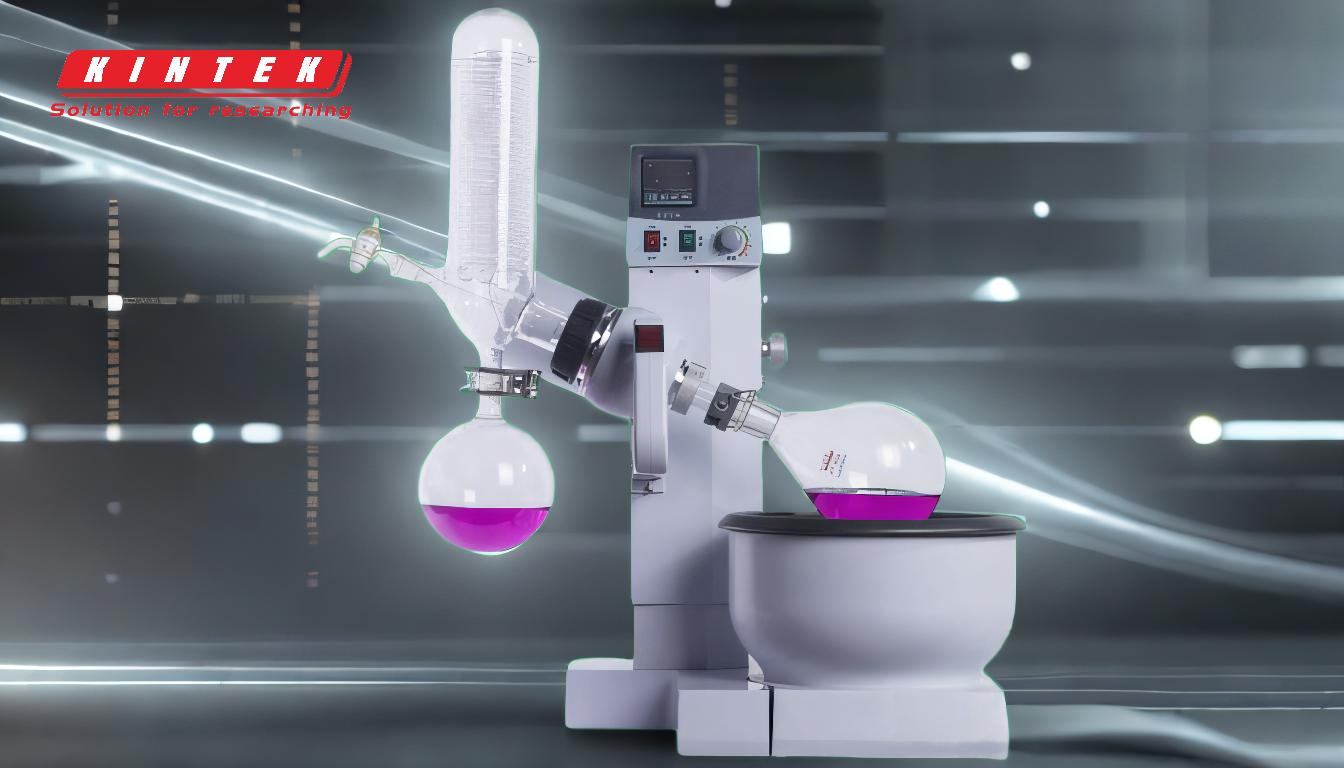Yes, you can use a rotary evaporator to remove water from a sample. A rotary evaporator is specifically designed for the efficient removal of solvents, including water, under reduced pressure and controlled temperature conditions. It is widely used in laboratories and industries for processes like evaporation, concentration, and solvent recovery. The device works by rotating a flask containing the sample, increasing its surface area for evaporation, while a vacuum reduces the boiling point of the solvent (in this case, water). The water vapor is then condensed and collected in a separate flask, leaving behind the concentrated sample.
Key Points Explained:

-
Purpose of a Rotary Evaporator:
- A rotary evaporator is designed to remove solvents, including water, from samples. It is particularly effective for evaporating volatile solvents under reduced pressure, which lowers the boiling point of the solvent and prevents thermal degradation of the sample.
-
How It Works:
- The sample is placed in a rotating flask, which increases the surface area for evaporation.
- A vacuum pump reduces the pressure inside the system, lowering the boiling point of the solvent (water).
- The flask is partially immersed in a heated water bath, providing controlled heat to facilitate evaporation.
- The evaporated solvent (water vapor) is condensed in a cooling system and collected in a separate flask.
-
Steps to Remove Water Using a Rotary Evaporator:
-
Step 1: Prepare the Equipment:
- Ensure the water bath is heated to the appropriate temperature.
- Check that the condenser is cold and the solvent trap is empty.
-
Step 2: Secure the Flask:
- Attach the flask containing the water-based sample to the rotary evaporator using a bump trap and secure it with clamps.
-
Step 3: Start Rotation and Apply Vacuum:
- Activate the rotor at a speed suitable for the sample volume to create an even coating on the flask’s inner surface.
- Turn on the vacuum pump and gradually increase the vacuum strength to reduce pressure.
-
Step 4: Monitor the Process:
- Lower the flask into the water bath and monitor the evaporation process.
- Adjust the vacuum and rotation speed as needed to prevent bumping (sudden boiling) and ensure efficient evaporation.
-
Step 5: Collect the Condensed Water:
- The water vapor will condense in the cooling system and collect in the receiving flask.
-
Step 6: Stop the Process:
- Once all the water has evaporated, turn off the vacuum pump, stop the rotation, and carefully release the vacuum to return the system to atmospheric pressure.
- Remove the flask containing the concentrated sample.
-
Step 1: Prepare the Equipment:
-
Advantages of Using a Rotary Evaporator for Water Removal:
- Efficiency: The combination of reduced pressure and controlled heat allows for rapid and efficient water removal.
- Gentle on Samples: The lower boiling point under vacuum minimizes the risk of thermal degradation.
- Versatility: Suitable for a wide range of sample types, including heat-sensitive materials.
- Scalability: Can handle small to moderate volumes, making it ideal for laboratory and pilot-scale applications.
-
Considerations:
- Bumping: Sudden boiling can occur if the vacuum is too strong or the rotation speed is too low. Using a bump trap and adjusting the vacuum strength can mitigate this issue.
- Temperature Control: Ensure the water bath temperature is appropriate for the sample to avoid overheating or incomplete evaporation.
- Safety: Always follow safety protocols, especially when working with vacuum systems and heated components.
In summary, a rotary evaporator is an excellent tool for removing water from samples, offering efficiency, precision, and versatility. By following the proper setup and operating procedures, you can achieve effective water removal while preserving the integrity of your sample.
Summary Table:
| Key Aspect | Details |
|---|---|
| Purpose | Removes solvents, including water, under reduced pressure. |
| How It Works | Rotates flask, reduces pressure, heats sample, and condenses water vapor. |
| Steps for Water Removal | Prepare, secure flask, apply vacuum, monitor, collect water, stop process. |
| Advantages | Efficient, gentle on samples, versatile, scalable. |
| Considerations | Prevent bumping, control temperature, follow safety protocols. |
Discover how a rotary evaporator can optimize your lab processes—contact us today!









